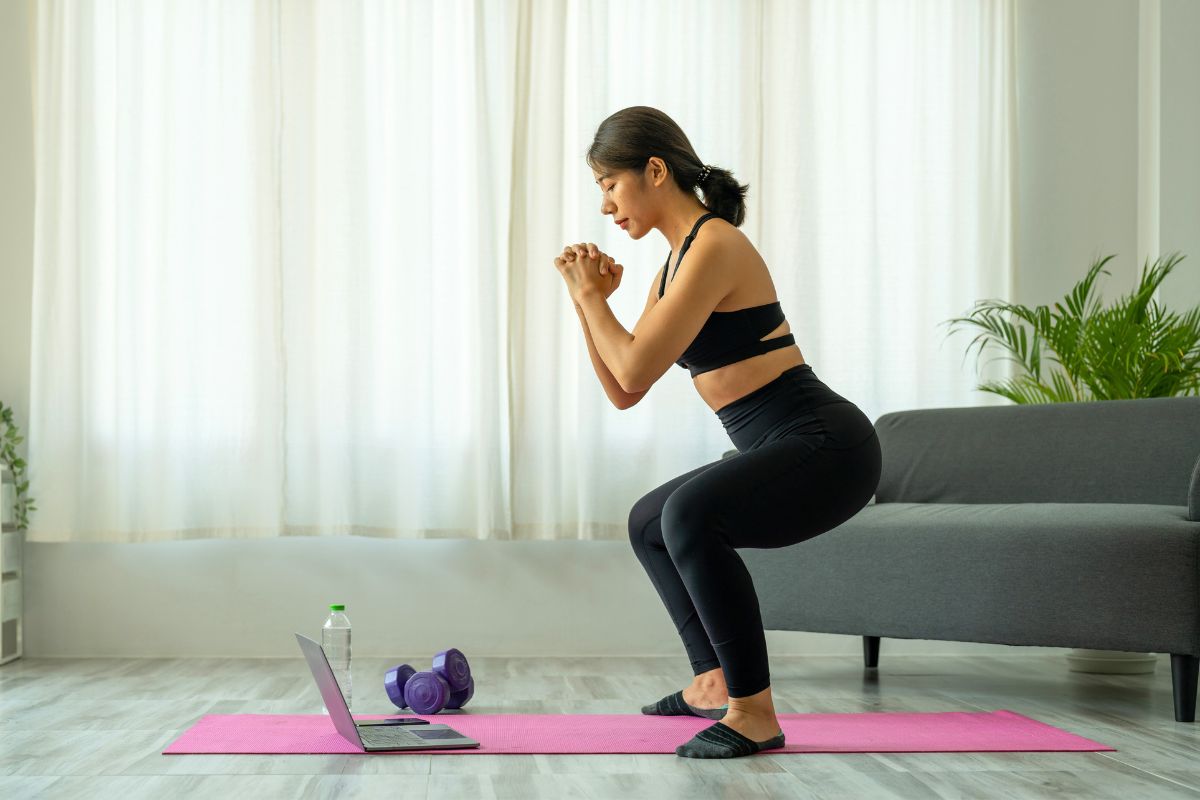If you are an active person, we know that you might have heard of HIIT before. This type of workout is known as high-intensity interval training (HIIT). It has become immensely popular among youth and other fitness enthusiasts due to its quick efficiency. You can get excellent results with just a 19-minute workout. It increases your heart rate, burns calories, and makes you feel refreshed.
The charm of an HIIT workout is that it is easy and simple to follow. But if you are new to HIIT, you can make these common mistakes that can lead to muscle injury and also prevent you from progressing toward your fitness goals.
There’s some important information to know for novices, so keep reading as we highlight the problems beginners run into and how to evade them.
Here are some of the mistakes beginners make in 19-minute HIIT workouts and tips on how to avoid them
What Is HIIT?
HIIT involves working out in short intervals with a rest gap in between, making it a form of exercise that uses an interval approach alternating between intense and low-level active recovery.
You might, for example, spend thirty seconds doing jumping jacks as fast as possible, resting for the next thirty seconds, repeating this cycle for twenty minutes.
According to research, HIIT not only improves several health conditions such as cardiovascular fitness, blood pressure levels, obesity, and weight management, but also does them in a far better way than traditional exercise.
Skipping Warm-Ups
Many beginners skip warming up. They jump straight into tough intervals. This can lead to pulled muscles or joint pain.
A warm-up raises your heart rate slowly. It helps your muscles and joints get ready for fast moves. If you skip warming up, you risk dangers such as muscle strains or injuries to your joints.
How to Avoid It:
Add 5 to 15 minutes of light cardio or dynamic stretching before you really get into the heart of the workout for your HIIT routine. Some suggestions could be brisk walking, arm circles, leg swings, etc.
Going Too Hard Too Soon
It’s so tempting to give it your all from the beginning, the idea being that you’ll be burning more calories. But when you push it too far, it can be a recipe for burnout or injury, especially if you’re not accustomed to doing high-intensity exercise.
In the experience of trainers interviewed by Yahoo Life, novices tend to copy experienced exercisers rather than listening to their limits.
How to Avoid It:
Pace yourself. Begin with about 70% of max effort and ease into things, at least at first. Increase the intensity slowly as your body acclimates.
Ignoring Proper Form
When you are moving quickly, form is easy to lose. If you have bad form, it will put unnecessary pressure on muscles or joints that may cause pain or an injury. Pounding down on your heels when you do jump squats, for example, can stress your knees.
How to Avoid It:
Focus on controlled movements. Quality matters more than quantity. And if you can’t keep your form, ease off the pace or intensity.
Not Allowing Enough Rest
There’s a reason HIIT has rest periods. These rests allow your heart rate to come down a bit and let you recover for the next burst.
Skipping rest or not giving yourself enough time to rest can make the workout too hard, leaving you fatigued or unwilling to log in for the session.
How to Avoid It:
Follow the planned intervals. If the workout reads 30 seconds on, 30 seconds off, do it. Rest is part of the training program, not a weakness.
Doing HIIT Every Day
HIIT workouts are of short duration, and that’s a big part of their marketing appeal. But HIIT is demanding. Your muscles, joints, and nervous system have a lot of healing to do.
If you overdo it, you can feel tired, resulting in poor performance and injury. You must do HIIT workouts 2-3 times a week, and that also must be mixed with other exercises.
How to Avoid It:
Balance your routine. Cross-train with low-intensity workouts, strength training, or rest days.
Using Bad Programming
That’s not to say all HIIT workouts are equal in quality. Random movements thrown together don’t always work and are often dangerous.
For example, doing too many jumping exercises in a stack can be hard on your joints.
How to Avoid It:
Opt for programs by well-known trainers or quality fitness apps. Seek out workouts with a distinctive structure that incorporates work and rest and a range of movements.
Not Listening to Your Body
Be wary of warning signs that beginners tend to overlook because they figure pushing through the pain is part of the workout. But sharp pain or dizziness is not something you should feel. Pushing through can make small injuries worse.
How to Avoid It:
Notice what you’re feeling. Some mild discomfort is OK, but sharp pain, any chest pain, or dizziness are signs you should stop. And don’t be embarrassed to change moves or add more rest as needed.
Forgetting to Cool Down
Just as warm-ups prepare you, cool-downs help you recover. A lot go through their last interval and then suddenly stop.
That can leave you with a high heart rate and feeling lightheaded.
How to Avoid It:
You must walk or stretch gently after finishing your HIIT session. This will help to decrease your heart rate and also promote flexibility.
Not Staying Hydrated
HIIT makes you sweat. Even brief sessions can leave you dehydrated if you’re not careful.
Dehydration can lead to headaches, fatigue, and poor performance.
How to Avoid It:
Drink water before, during, and after your workout. Don’t wait until you’re thirsty.
Failing to Adjust for Your Fitness Level
Being in too advanced a workout can be discouraging or cause injury.
Beginners often find workouts online that are played by advanced trainers, but without understanding that those workouts are for those who have trained for years.
How to Avoid It:
Pick beginner-friendly HIIT routines. These tend to have less difficult moves, longer rest, and lower total time. Choose more challenging variations as you get fitter.
Final Thoughts
HIIT is a great tool to add to your exercise repertoire. Researchers have supported its heart and weight-control benefits and its time-saving workouts. But it’s not magic. By avoiding these easy-to-make mistakes, you can make the most of your 19-minute sessions without risking injury or burnout. Start slow. Focus on form. Listen to your body.
And don’t discount: rest is part of the strategy. With these suggestions, you can make HIIT a way that is safe and effective in the short and long terms.











